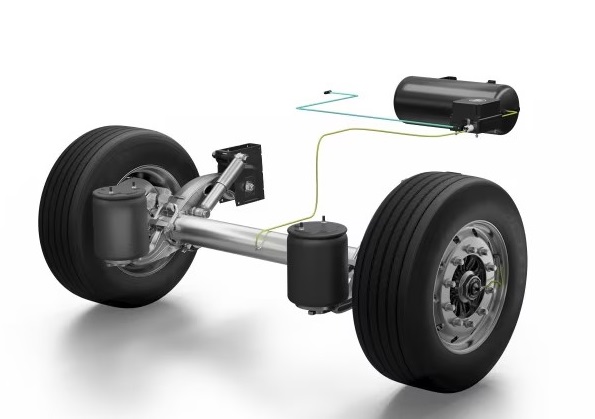
BPW explains why the potential cost savings from automatic control of tyre pressure.
Margins in the transport sector are getting smaller and smaller. This means anything that tangibly reduces transport costs will relieve the pressure on the transport company's balance sheet. In this context, it is astonishing that in Germany alone, millions of litres of excess diesel are consumed every year in road freight transport, unnecessarily emitting CO2 into the atmosphere, and that vast quantities of tyres wear out prematurely. The main drivers for this are pressure variations in the tyres, which cause a considerable increase in fuel consumption and wear on the trailer. This is not a coincidence, as truck tyres have to take a lot of punishment: constantly changing load weights, road conditions and temperatures quickly lead to pressure variations, causing the tyres to wear out at a rapid pace. This not only increases operating costs, but also the risk of accidents: after all, tyres are the only point of contact between the trailer and the road, and even slight variations in pressure can jeopardise driving stability. A puncture can cause serious accidents that may endanger cargo, the vehicle or other road users. According to ADAC TruckService, most truck accidents are caused by poor maintenance. In accordance with this report, breakdown service staff are called out about 40,000 times per year. According to their own data, punctures are the cause in two thirds of the cases, i.e. 26,400 potentially prematurely worn tyres that can also no longer be retreaded. A new premium-brand trailer tyre easily costs 300 euros and more.
If you want to avoid unplanned downtime due to loss of tyre pressure, tyre pressure control systems are a suitable solution. Because after all, a warning signal alone does not eliminate the pressure variation. Anyone familiar with the realities of day-to-day transport operations knows that some responsible persons will ignore warnings in the driver's cab in order to meet deadlines. This is why BPW give the recommendation: monitoring is good, regulation is better.
A tyre pressure control system such as the award-winning AirSave from BPW compensates for a pressure variation of more than five per cent within ten minutes. Fully automatically, without interruption of the transport process. In the event of a puncture, the system pumps powerfully to compensate for the flat tyre – so the driver can safely reach the workshop and avoid unplanned downtimes.
AirSave also reduces the economic burden on fleet operators, here is an example: for a three-axle vehicle with a mileage of 120,000 kilometres per year and an average pressure deviation of 10 per cent, the system delivers a cost benefit of 700 euros per year – solely as a result of the fuel savings (around 250 litres) and the longer service life of the tyres.
But what about existing vehicles? AirSave will also be available as a retrofit solution from the end of 2024. Retrofitting AirSave is especially worthwhile for trailers with particularly valuable superstructures such as tank silo vehicles or vehicles for transporting hazardous goods. For large fleets with more than 200 vehicles, a combination of AirSave and telematics is practically indispensable: the savings in terms of economy, time and organisation effort cannot be disregarded by any business-minded fleet operator.
So simple tyre pressure monitoring systems have their place in the market. Nevertheless, it is to be expected that automatic tyre pressure regulation using intelligent TPR systems such as AirSave will soon become the standard in the transport industry due to the many additional benefits, such as the avoidance of unplanned downtimes Source